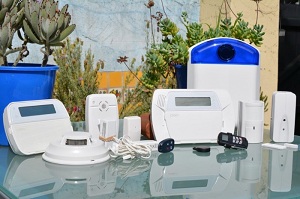IHS Markit estimates that 68 million intruder alarm sensors were sold globally in 2016; of which, 41 percent were wireless, according to the latest intruder alarm and monitoring database. However, just 4 percent of those wireless sensors were destined for the large commercial sector. Residential and small-medium business sectors jointly accounted for the remaining 96 percent of the wireless sensor market. Although the use of wireless sensors remains limited in the commercial sector, Anna Sliwon, analyst in security at IHS Markit, believes that the popularity of these products is on the rise for several reasons.
Wireless sensors carry significantly lower installation costs as the installation process is much simpler and quicker. The lower install cost that comes with wireless sensors allows companies’ to allocate a greater portion of their security budget to hardware, enabling them to invest in additional or higher-quality sensors, or upgrades for the system, such as integration with video surveillance.
Wireless solutions are also more practical in unique installations like remote areas without easy access to the power mains. To overcome range issues, mesh networks, which act as signal repeaters, are used for larger installations. Moreover, as the use of wireless sensors proliferates across commercial applications, consumers may choose to adopt wireless control panels, to allow for easier future addition of extra sensors, as they won’t require on-site IT configuration to add to the system.
IHS also found that prices of wireless sensors have also fallen fast, decreasing by 16 percent since 2012. Battery lifespan of wireless sensors has also improved in recent years, now lasting between one and five years depending on circumstances. Although enhancements have been made, limited lifespan of sensor batteries will put pressure on the security systems manager, necessitating the procurement of software that will allow to easily manage battery statuses.
In addition, more wireless sensors are now available with UL certification, a prerequisite for many professional monitoring and insurance providers. And although wireless sensor technology is making inroads into commercial projects, concerns remain such as encryption, sensor price and ongoing maintenance costs.








